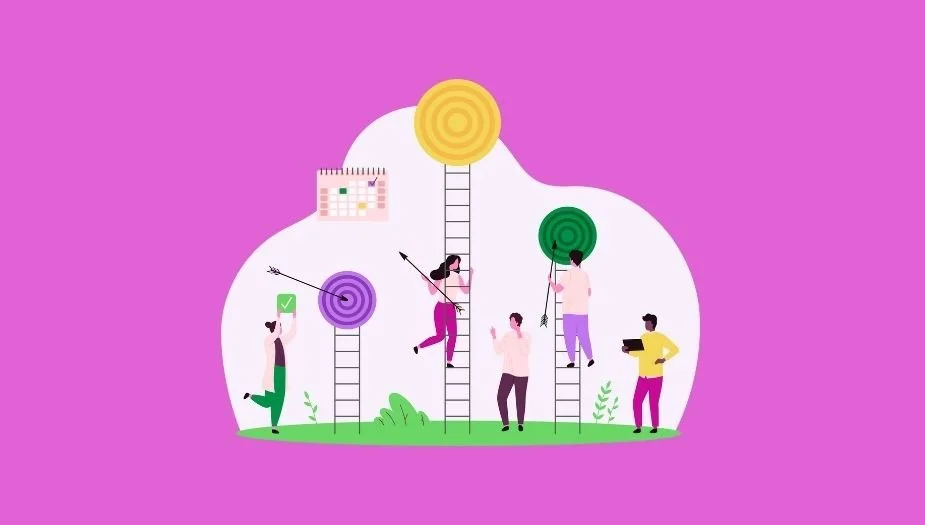Make Better Decisions: Long-Term Strategic Planning Over Short-term Problem-Solving
Why Long-Term Thinking Matters
In the chaos of daily life, especially for those experiencing extreme chronic stress, burnout, or trauma, decision-making can feel like an impossible task. When caught up in immediate stressors, it’s easy to focus only on the short-term—reacting to problems rather than proactively planning for the future. However, shifting toward long-term thinking can help reduce unnecessary stress, increase clarity, and ensure that your energy is directed toward what truly matters.
But why is long-term thinking so difficult for those who are burned out or have a history of trauma? And how can someone transition from survival mode to a mindset that allows for clear, strategic planning? This article explores these questions while offering practical steps to integrate long-term thinking into daily life.
The Science Behind Short-Term Thinking in Survival Mode
The Role of Stress and Trauma in Decision-Making
The human brain is wired to prioritize survival. When faced with chronic stress, the brain shifts its focus to immediate threats. This is largely due to the activation of the amygdala, the part of the brain responsible for detecting danger and initiating a fight-or-flight response. Under prolonged stress, the prefrontal cortex—the area responsible for logic, executive functioning, and long-term planning—becomes less active.
For trauma survivors who have lived in survival mode for years, this brain response becomes ingrained. Their default is to focus on immediate safety, making it nearly impossible to engage in logical long-term planning. Even after escaping the stressful environment, their brain may remain in a hyper-vigilant state, prioritizing short-term problem-solving over long-term strategy.
The Transition from Survival Mode to Stability
When someone begins to heal from stress or trauma, they may start to feel safer and more grounded. However, without the constant urgency that stress provided, they might struggle with decision-making. This is because their brain has been conditioned to respond to immediate pressures rather than build long-term goals. The transition requires retraining the brain to engage the prefrontal cortex and shift from reactive to proactive thinking.
Steps to Develop Long-Term Thinking
1. Start Small: The 6-Month View
Rather than immediately trying to map out a five-year plan, begin with a six-month outlook. Ask yourself:
Where do I want to be in six months?
What small changes can I make today to move in that direction?
What challenges am I likely to face, and how can I prepare for them?
This approach keeps planning manageable while still introducing the habit of thinking ahead.
2. Reduce Daily Decision Fatigue
When overwhelmed, even simple choices—like what to eat for lunch—can be exhausting. To create mental space for long-term planning, streamline daily decisions:
Create routines for meals, workouts, and work schedules.
Use tools like calendar apps and reminders to automate planning.
Set non-negotiables (e.g., “I always exercise on Mondays and Wednesdays”).
By minimizing small decisions, you conserve energy for bigger, future-focused choices.
3. Identify Patterns, Not Just Problems
In survival mode, people react to problems as they arise. Long-term thinkers identify patterns that cause recurring issues. For example:
Instead of repeatedly quitting jobs due to burnout, analyze work habits and boundaries.
Instead of constantly struggling with time management, recognize when and why time is wasted.
Looking at patterns rather than isolated problems allows you to implement sustainable solutions.
4. Develop a Decision-Making Framework
A simple but effective framework for long-term decision-making is to ask:
Will this matter in a year? If not, it may not be worth the stress.
Does this align with my values and goals? If it doesn’t serve your long-term vision, reconsider it.
What is the opportunity cost? Every decision requires time and energy—what are you giving up by choosing this path?
Using this framework can make decision-making more structured and intentional.
5. Practice Future Visualization
Spending even five minutes a day visualizing your future self can help shift your brain’s focus. Try these prompts:
“If I continue on my current path, where will I be in a year?”
“What does the best version of my future self look like?”
“What small habits can I start today that my future self will thank me for?”
The more you practice visualizing the future, the easier long-term thinking becomes.
Flexibility vs. Rigidity in Long-Term Planning
While long-term thinking is crucial, it’s equally important to remain adaptable. Overly rigid planning can lead to frustration when life inevitably changes. Here’s how to strike a balance:
Be Committed to Goals, But Flexible in Approach
Example: If your goal is career stability but your current industry isn’t offering opportunities, be open to adjacent fields or new skills.
Mindset Shift: See changes as pivots, not failures. The end goal remains the same, but the path may shift.
Embrace Iterative Planning
Instead of a rigid five-year plan, use an iterative approach, adjusting goals as needed every few months.
Think of it like a GPS—if the original route is blocked, it recalculates without abandoning the destination.
Avoid Perfectionism in Planning
Many people resist long-term planning because they fear making the wrong decision. But the reality is:
There’s no perfect plan.
The best decisions are made with the information available at the time.
Learning and adapting is more important than getting it right the first time.
Final Thoughts: Building a Life That Works for You
Thinking long-term isn’t about having every detail figured out. It’s about consistently making choices that move you toward a future that aligns with your values and goals.
If you’re coming out of burnout, stress, or survival mode, give yourself grace. Start small, build decision-making habits, and gradually expand your long-term vision. With time and practice, you’ll regain confidence in your ability to plan for a meaningful future—without getting lost in the noise of short-term stressors.
Remember: Your future self is counting on you to make choices today that support the life you want to create. And the good news? You don’t have to have all the answers—you just have to start moving in the right direction.
Need Help? Efficiency without direction is just burnout in disguise.
Let’s align your time, energy, and actions with what actually moves the needle.
💡 Book your free consult and let’s build a system that works for you, not against you.
Article References
The sources cited in the article:
Forbes. "Outcome-Based Management: What It Is, Why It Matters." Forbes - Outcome Based Management: What It Is
Harvard Business Review (HBR). “How to Do Strategic Planning Like a Futurist.” HBR - How to Do Strategic Planning Like a Futurist
Forbes. “Why Long-Term Thinking Can Help Solve Our Biggest Challenges.” Forbes - Longterm Thinking Solve Biggest Challenges
McKinsey. "Three Keys to Better Decision Making." McKinsey - Three Keys to Better Decision Making
Harvard Business School. "The Advantages of Data-Driven Decision Making.” Harvard - Data Driven Decision Making
PsychologyToday (PT). “People Pleasing Is a Symptom of Childhood Trauma” PT - People Pleasing Symptom of Trauma
Precision Nutrition (PN). “Three Easy to Use Coaching Tools: Powerful Words and OBDM.” PN - Powerful Words and OBDM






